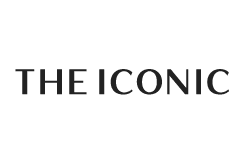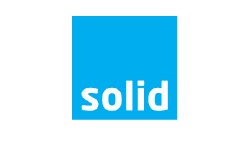Ecommerce SEO Audit Packages & Plan
Your online store is assessed to find errors and opportunities for your products to appear for relevant searches.
Increase organic traffic, leads, sales and ROI - It all starts here.

Standard
Elevate your website to
achieve higher visibility
- 400+ points audited
- Ecommerce Specific Audits
- Receive report in 45 Days
- Support for 60 days
TRUSTED BY GLOBAL BRANDS


















We are driven by Results
1.8+ Billion
Organic Sessions
1.5+ Billion
Organic Clicks
800+ Million
Users
50+
Awards
1.8+ Billion
Organic Sessions
1.5+ Billion
Organic Clicks
800+ Million
Users
50+
Awards
What happens after you request for a proposal?
01
Requirement Call
Industry-specific experts are assigned to conduct a virtual meeting with your team. This intro call focuses on understanding your current challenges, objectives, and key performance indicators (KPIs). Through this interactive session, our experts gain valuable insights.
02
Approach
We delve into a deep competitor analysis and conduct extensive research of your industry. Drawing upon our years of experience, we merge these findings to formulate a strategic plan. This plan leverages our expertise and insights to develop a comprehensive strategy that aligns with your business objectives and maximizes your chances of success.
03
Proposal
The proposal includes a detailed roadmap, clearly outlining recommended activities and KPIs based on the client’s goals. We explain you the strategies and techniques proposed. The proposal also focuses on defining specific KPIs for measuring success. Feedback and adjustments are encouraged to ensure the proposal meet your needs. Once finalized, the proposal forms the basis for the formal agreement between us.
04
Kick-off
We facilitate your onboarding process, introducing you to your dedicated team. During this kickoff meeting, you have the opportunity to meet the professionals who will be working closely with you. Additionally, we provide you with a clear roadmap, outlining the step-by-step plan for moving forward. This roadmap ensures everyone involved is on the same page and enables a smooth and efficient project implementation.
Industry-specific experts are assigned to conduct a virtual meeting with your team. This requirement call focuses on understanding your current challenges, objectives, and key performance indicators (KPIs). Through this interactive session, our experts gain valuable insights.
We delve into a deep competitor analysis and conduct extensive research of your industry. Drawing upon our years of experience, we merge these findings to formulate a strategic plan. This plan leverages our expertise and insights to develop a comprehensive strategy that aligns with your business objectives and maximizes your chances of success.
The proposal includes a detailed roadmap, clearly outlining recommended activities and KPIs based on the client’s goals. We explain you the strategies and techniques proposed. The proposal also focuses on defining specific KPIs for measuring success. Feedback and adjustments are encouraged to ensure the proposal meet your needs. Once finalized, the proposal forms the basis for the formal agreement between us.
We facilitate your onboarding process, introducing you to your dedicated team. During this kickoff meeting, you have the opportunity to meet the professionals who will be working closely with you. Additionally, we provide you with a clear roadmap, outlining the step-by-step plan for moving forward. This roadmap ensures everyone involved is on the same page and enables a smooth and efficient project implementation.
hear from our clients


Luke Jedeikin
Co-CEO / CMO at Superbalist

Read More

THE ICONIC
Head of SEO at THE ICONIC

Given such a complex requisite, we believe Infidigit has done splendid job for our website. 5 stars to the Infidigit SE0 team for their continuous efforts. Were extremely happy with the results, and we hope to see more from our collaboration.


James Hacking
Founder of Socially Powerful

Read More
PLATFORMS WE OPTIMISE

Our SEO SERVICES PACKAGES


Ecommerce SEO Packages
Ecommerce SEO is the process of optimizing a website to rank higher in search engine results, attract more traffic, and ultimately encourage purchases. It involves optimizing product pages, categories, and the overall structure of the website to ensure that it is search-engine friendly.
SEO Audits Packages

SEO audit is an evaluation of a website’s current search engine optimization practices and performance. It involves analyzing various technical, on-page, and off-page factors to identify any issues that might be a cause for concern or preventing your website from ranking higher on SERPs.


Enterprise SEO Packages
Enterprise SEO is the process of optimizing large websites, often with thousands of pages, to rank higher in search engine results. It requires a strategic and scalable approach to SEO, taking into account the unique requirements of large websites, including technical challenges and complex organizational structures.
Local SEO
Local SEO is the process of optimizing a business’s online presence for local search queries. It involves claiming and verifying your business’s listing on local directories, such as Google My Business, and optimizing your website for local keywords.

Start your growth journey
Whether you’re new, growing or established. We’ll help you drive organic traffic that generates revenue for you.
Compare all features
|
Standard Get Proposal |
||
Ecommerce SEO Audit |
||
Identifying Product Images with missing/non-descriptive img alt attributes |
Alt attributes should be added or improved for better accessibility and SEO. |
|
Auditing Pagespeed metrics of important category pages |
To enhance user experience and search engine rankings, category pages should be analyzed and optimized for page speed. |
|
Product Descriptions Analysis & Recommendations |
Product descriptions should be assessed and optimized to improve search visibility and conversions. |
|
Auditing Parameter URLs |
URLs with parameters should be reviewed and optimized to ensure proper indexing and prevent duplicate content issues. |
|
Ecommerce Pagination Audit |
Pagination elements for ecommerce websites should be evaluated and optimized to improve crawlability and user experience. |
|
Examining bounce rate of Money pages |
High bounce rates on important money pages should be analyzed and addressed to improve engagement and conversions. |
|
Auditing Brand-related pages |
Thorough analysis should be conducted to optimize brand pages for search engine alignment and brand strategy. |
|
Auditing Enchanced Ecommerce tracking codes |
Code implementation should be optimized for precise ecommerce performance analysis. |
|
Analysing Ecommerce Conversion Rate |
Gain insights, improve performance, and drive conversions. |
|
Content Audit |
||
Hidden content check |
Hidden content on the website that may negatively impact search engine rankings should be identified and addressed. |
|
Finding pages with missing/multiple H1 tags |
Pages that are missing H1 tags or have multiple H1 tags should be identified and optimized for better on-page SEO. |
|
Identifying “thin” pages |
Identification and addressing of thin or low-quality content ensure value for users and search engines. |
|
Identifying duplicated pages |
Resolution of duplicate content issues boosts visibility of unique and relevant content while avoiding penalties. |
|
Indentifying under-optimized landing pages |
Identification of pages lacking keyword optimization, meta tags, and on-page elements, along with improvement suggestions. |
|
Indentifying pages with low click through rates |
Suggestions for optimizing low CTR pages to attract organic traffic and enhance visibility. |
|
Robots.txt Configuration Audit |
||
Robots.txt file check |
Proper configuration of robots.txt enables search engines to crawl and index desired pages on your website. |
|
Checking XML sitemap declaration in Robots.txt |
Declaration of XML sitemap in robots.txt ensures seamless website crawling and indexing by search engines. |
|
Identifying Errors in robots.txt file |
Effective control of search engine access by identifying and resolving errors in the robots.txt file. |
|
Identifying pages that should be blocked using robots.txt |
Identification and resolution of errors or syntax issues in the robots.txt file for better search engine control. |
|
Checking whether robots.txt file is uploaded in the correct directory |
Uploading the file to the correct server location allows search engines to access and follow its instructions. |
|
Checking whether records are grouped improperly |
Reviewing and categorizing records to provide clear instructions for search engine bots. |
|
Auditing & Recommending relevant Wildcards |
Assessing wildcard directives and recommending optimal usage to regulate specific areas of the website. |
|
Differentiate pages that require noindex tag/ should be blocked in robots.txt |
Identification of 'noindex' pages and blocking them in robots.txt if necessary to safeguard against search engine crawling. |
|
XML & HTML Sitemap Audit |
||
Sitemap.xml check |
Proper formatting and inclusion of all essential pages should be ensured for search engine indexing. |
|
Checking whether XML Sitemap is submitted to Google or Bing |
Submission of XML sitemap to Google and Bing ensures indexing and visibility of website pages. |
|
Identifying Errors in XML sitemap |
Identification and rectification of errors or issues within the XML sitemap that may hinder search engine crawling and indexing. |
|
Finding non-200 pages in sitemap |
Detection of non-200 status code pages in the XML sitemap reveals concerns related to crawlability and accessibility. |
|
Finding non-canonical URLs in sitemap |
Uncovering non-canonical URLs in the XML sitemap helps prevent duplicate content indexing. |
|
Finding PPC pages in sitemap |
Exclusion of PPC landing pages from the XML sitemap improves indexing and relevancy. |
|
Checking XML Sitemap size |
Evaluation of the size of the XML sitemap to ensure compliance with search engine guidelines and optimize crawling efficiency. |
|
Checking whether blocked pages are declared in sitemap |
Ensuring an accurate XML sitemap to prevent indexing of sensitive or unnecessary content. |
|
Checking whether orphaned pages are declared in sitemap |
Discovery of orphaned pages in the XML sitemap ensures their inclusion by search engines, identifying pages not linked from others. |
|
Recommendation for Specialty Sitemaps |
Enhancement of content visibility through specialized sitemaps, such as video and image sitemaps, along with indexing suggestions. |
|
Recommending categorized structure for XML Sitemap |
Optimization of XML sitemap with structured categorization for better organization and management. |
|
Structured Data/Schema Markup Audit |
||
Checking existing Structured Data on pages (JSON-LD, Microdata & RDFa) |
The presence and accuracy of structured data markup (such as JSON-LD, Microdata, and RDFa) on your website's pages can be assessed to enhance search engine understanding. |
|
Identifying errors in Structured Data |
Errors in the implementation of structured data can be identified and fixed to ensure error-free schema markup. |
|
Structured markup isn’t resulting in rich snippets |
The impact of structured data on search results can be evaluated, and recommendations for improvement can be provided. |
|
Identifying pages that require structured data |
Pages or content that can benefit from structured data implementation can be identified, resulting in enhanced search engine visibility. |
|
Recommending Schemas that need to be added on pages |
Recommendations can be made regarding schemas and structured data to improve search engine comprehension of your pages. |
|
Image/Video SEO Audit |
||
Collating list of large images |
Identifying and compiling a list of large images can help optimize website performance. |
|
Finding images with no or irrelevant ALT text |
Optimizing images by providing ALT text or updating irrelevant ALT text improves search engine understanding. |
|
Image sitemap check |
Ensuring the completeness and accuracy of the image sitemap facilitates search engine crawling and indexing. |
|
Checking visibility for image search |
Optimizing image metadata and relevance enhances the visibility of images in image search results. |
|
Creation of Image sitemap |
Creating an image sitemap improves the discoverability of images by search engines. |
|
Checking whether images are served through a CDN |
Verifying if images are served through a Content Delivery Network (CDN) improves loading speed and performance. |
|
Video sitemap check |
Checking the video sitemap for proper indexing and inclusion of video content in search results. |
|
Checking markup for videos |
Reviewing video markup for proper implementation and compatibility with search engines. |
|
Identifying whether video pages lack text |
Identifying video pages lacking text content and considering the addition of relevant text improves SEO performance. |
|
Creation Video sitemap |
Creating a video sitemap enhances the indexing and visibility of video content by search engines. |
|
Titles & Meta Description Audit |
||
Pages with missing titles |
Improving the optimization of page titles enhances search engine visibility. |
|
Pages with long titles |
Improving the optimization of page titles enhances search engine visibility. |
|
Pages with short titles |
Improving the optimization of page titles enhances search engine visibility. |
|
Pages with missing meta descriptions |
Enhancing the optimization of meta descriptions improves search engine visibility. |
|
Pages with long meta descriptions |
Enhancing the optimization of meta descriptions improves search engine visibility. |
|
Pages with short meta descriptions |
Enhancing the optimization of meta descriptions improves search engine visibility. |
|
Duplicate page titles |
Eliminating duplicate page titles ensures uniqueness and clarity. |
|
Odd capitalizations in titles |
Ensuring consistent capitalization in titles for a cohesive presentation. |
|
Odd capitalizations in descriptions |
Ensuring consistent capitalization in descriptions for a cohesive presentation. |
|
Pages with non-descriptive titles |
Enhancing the relevance and click-through rates of pages with non-descriptive titles. |
|
Identifying whether descriptions have a powerful calls to action |
Evaluating meta descriptions for compelling calls to action and messaging. |
|
PageSpeed Audit |
||
Checking Page load times of top landing pages |
The performance of the website can be improved by measuring page load times for top landing pages. |
|
Checking Page load times of money pages |
Ensuring fast and efficient delivery of key content by assessing page load times for money pages. |
|
Examining Page Caching mechanism |
Enhancing website speed and reducing server load by examining the page caching mechanism. |
|
Checking Page Size |
Optimizing loading speed and overall website performance by checking page size. |
|
Check whether code is using Gzip compression |
Reducing file sizes and improving page load times through the utilization of Gzip compression. |
|
Inline CSS check |
Optimizing code and improving rendering speed through an inline CSS check. |
|
Indetifying whether minification of JavaScript or CSS is required |
Optimizing code efficiency and page load times by identifying the need for minification of JavaScript or CSS. |
|
Identifying Core Web Vitals metrics for pages |
Identifying areas for improvement in user experience by evaluating Core Web Vitals metrics for pages. |
|
Identifying HTTP requests |
Reducing server load and improving page load times by identifying and optimizing HTTP requests. |
|
Inline JavaScript check |
Optimizing code and improving website performance through an inline JavaScript check. |
|
URL/Folder Structure Audit |
||
Auditing Canonical tags |
An audit of Canonical tags is conducted to consolidate URLs correctly and prevent duplicate content issues. |
|
Redirection checks for non www and .html pages |
Checks are performed to ensure consistent redirection of non-www and .html pages, maintaining a uniform URL structure. |
|
Checking URLs through both secure and non-secure protocols |
The accessibility and indexing of URLs are verified through both secure and non-secure protocols. |
|
Checking whether URLs resolve to a single case |
URLs are ensured to resolve to a single case to avoid potential duplicate content and indexing challenges. |
|
Checking if trailing slashes are resulting in duplicate content |
Duplicate content concerns arising from trailing slashes are addressed to maintain a clean URL structure. |
|
Checking if parameter URLs are resulting in duplicate content |
Duplicate content problems caused by parameter URLs are identified and resolved to enhance SEO performance. |
|
Auditing Page indexation |
A comprehensive audit of page indexation is conducted to ensure that all relevant pages are appropriately indexed by search engines. |
|
Mobile Friendliness Audit |
||
Checking whether site elements are mobile-friendly |
Enhancing the mobile user experience and improving SEO performance involves ensuring that site elements are mobile-friendly. |
|
Checking Bounce rate of mobile visitors |
Analyzing the bounce rate of mobile visitors helps identify potential issues and optimize user engagement. |
|
JavaScript and/or CSS are blocked |
Verifying if JavaScript and/or CSS are blocked ensures proper rendering and indexing by search engines. |
|
Auditing Vary HTTP headers |
Conducting an audit of Vary HTTP headers optimizes caching and improves website performance. |
|
Auditing rel="alternate" and rel="canonical" tags |
Auditing rel="alternate" and rel="canonical" tags ensures proper handling of mobile and desktop versions for better search engine performance. |
|
Mobile sitemap check |
Checking the mobile sitemap for completeness and accuracy facilitates search engine crawling and indexing. |
|
Identifying mobile-only 404s |
Identifying mobile-only 404 errors ensures a seamless user experience on mobile devices. |
|
Identifying whether interstitials on mobile disrupt mobile browsing |
Evaluating interstitials on mobile prevents disruptions in mobile browsing and improves overall usability. |
|
Identifying irrelevant cross links |
Identifying and eliminating irrelevant cross-links enhances user navigation and SEO relevance. |
|
Auditing mobile site for unusual breakpoints |
Auditing the mobile site for unusual breakpoints ensures consistent design and functionality. |
|
Checking whether mobile app content is indexed correctly |
Verifying the correct indexing of mobile app content improves visibility in mobile search results. |
|
Checking zoom functionality on mobile |
Checking the zoom functionality on mobile devices ensures an optimal user experience and accessibility. |
|
Checking disparity between desktop and mobile version |
Identifying and addressing any disparities between the desktop and mobile versions of the website is important for consistency. |
|
Footer Audit & Recommendation |
An audit of the footer should be conducted to identify optimization opportunities and provide recommendations. |
|
Internal Linking Structure Audit & Recommendaton |
Evaluating the internal linking structure and offering recommendations for improvement can contribute to better SEO performance. |
|
Redirection Checks |
Checking and optimizing redirections is essential to maintain proper website flow and prevent broken links. |
|
Top Navigation & Breadcrumbs Audit & Recommendation |
The top navigation and breadcrumbs should be audited for usability, and recommendations for improvement should be provided. |
|
In-depth Backlink Profile Audit |
Conducting an in-depth analysis of the backlink profile can help identify areas for improvement in SEO. |
|
Checking Implementation of Tracking Codes |
Verifying the proper implementation of tracking codes ensures accurate data collection and analysis. |
|
Pagination/Infinite Scroll Audit |
Auditing pagination and infinite scroll functionality is important for better user experience and indexability. |
|
HTTPS Check & Server-level Configuration Audit |
A thorough check of HTTPS implementation and server-level configurations is necessary for security and SEO compliance. |
|
Accelerated Mobile Pages (AMP) & Progressive Web Apps (PWA) Audit |
Optimizing Accelerated Mobile Pages (AMP) and Progressive Web Apps (PWA) can enhance mobile performance. |
|
Detailed Recommendation for improving Core Web Vitals metrics |
Providing detailed recommendations for improving Core Web Vitals metrics, with a focus on speed and user experience, is essential. |
|
Site Architecture Audit |
Conducting a comprehensive site architecture audit and suggesting improvements can improve crawlability and indexability. |
|
Crawl Rate Optimization Audit |
Optimizing the crawl rate ensures that search engines can efficiently access and index website content. |
|
Rendering Techniques and Suggestions |
||
DOM Structure Audit |
An audit of the DOM structure should be performed to identify optimizations for efficient rendering and better performance. |
|
Reports Included |
||
SEO Scorecard |
SEO scorecard is generated to assess website performance and identify areas for improvement. |
|
In-depth Backlink Audit Report |
An in-depth backlink audit report is provided to analyze the quality and quantity of backlinks. |
|
Audit Report Version |
The audit report version outlines SEO findings and recommendations for optimization. |
Spreadsheet + Document Version |
SEO Strategic recommendations |
Strategic recommendations are offered to improve SEO performance and organic visibility. |
4 Points |
Audit implementation explanation |
A detailed explanation of the audit implementation process and its impact on SEO is provided. |
8 Hours |
Audit support for engineering team |
Offer support and guidance to your engineering team in implementing the necessary changes and optimizations recommended in the SEO audit. |
60 Days |
Time Duration |
Provide a realistic timeline for completing SEO activities and implementing recommended optimizations, estimating expected results. |
Receive report in 45 Days |
Want More? Get a Custom Plan.
We recognize the distinct needs of your business and provide tailored SEO Packages that deliver tangible results. Talk to our experts to help you find the best solution.
Our Ecommerce SEO Audit Services
Infidigit’s Ecommerce SEO audit packages offer a comprehensive and effective audit assessing your online store’s performance, technical, UI/UX, and digital marketing aspects.
We identify the bottlenecks and growth opportunities for your Ecommerce business to improve conversion rates and fix speed and security issues.
With your years of experience and data-driven approach, we carve out a successful roadmap for your Ecommerce website to engage customers at touchpoints and bring opportunities for growth and revenue. Our seasoned aspects check your website’s most critical aspects – technology stack, utility integrations, design, platform utilization, and customer experience.
What are the key components of ecommerce SEO audit packages?
Technical SEO Audit
Our Ecommerce SEO audit packages comprise technical audits for your website’s technical stack, payments and security, total cost of ownership (TCO) assessment, data handling, and workflows.
We help you build a scalable architecture by providing support and direction in selecting the most suitable Ecommerce platform and technology.
On-Page SEO Audit
We conduct a deep SEO audit to analyze the on-page potential of your website. We identify link-building opportunities and architectural improvements. On-page SEO also involves fixing your content for keyword optimization, duplicate content, and thinning it down for a better exploring experience.
Off-Page SEO Audit
Our off-page SEO audits involve the SEO taking place outside your website yet concerning your website’s growth and performance on SERPs. By exploring the opportunities for possible backlinks, we bring trust and authority to your Ecommerce website. Once your backlinking game is set, your site’s value will organically bring more traffic to your website.
Competitor Analysis
Conducting a thorough competitor analysis is the first and most ubiquitous step in any SEO strategy. We deliver data-driven insights on how you can build your SEO game to make your Ecommerce shop stand out from among the crowd and rank higher on SERPs.
Website Structure
We understand that every business is unique and requires a specific website architecture. Our Ecommerce SEO audit packages help you select a website structure that is crawlable, indexable by Google bots, and readable by your users. We resolve broken links, non-indexable pages, duplicate URLs, and XML sitemaps for your online store for search engines to crawl faster.
Mobile Friendliness
No online business can do without a mobile-friendly website today. Our Ecommerce SEO audit pricing includes the costs of building one for your business. We ensure your website has a mobile-responsive design and is compatible with regard to touchscreen readiness, mobile compatibility, and font size legibility.
We have generated 12,000,000+ leads for our clients Start your growth journey to boost your revenue today.
We have generated 12,000,000+ leads for our clients Start your growth journey to boost your revenue today.

FAQs on Ecommerce SEO Audit Package
How useful was this post?
0 / 5. 0





















